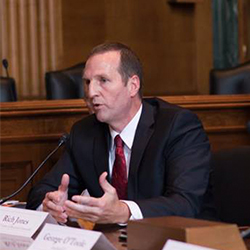With Co-occurring Disorders Be Extraordinarily Careful
COD – Co-Occurring Disorders
Over the past few decades, practitioners and researchers increasingly have recognized the link between substance abuse and mental disorders. Some studies suggest co-occurring disorders are present in up to 60% of addiction treatment admits.
Defined as the presence of at least one substance use disorder and at least one axis 1 mental health diagnosis or axis 2 personality disorder. Some states have aggressively pushed COD services.
Clinical credentials reflect this commitment to COD services—for example:
I am a Certified Co-Occurring Disorders Professional from my days in Pennsylvania.
Treatment Improvement Protocol
There is also a SAMHSA guide called TIP 42 (Treatment Improvement Protocol) that serves as guidelines for COD services.
When it came out in 2010 (?) there were also TIP 42 trainer the trainer courses.
I am a Certified TIP 42 trainer (talk about an obscure credential).
Facilities in PA could also become accredited as COD INTEGRATED (the highest standard) or COD COMPETENT clinical facilities.
The hope was that COD services would become the norm. This “movement” has lost much of its momentum.
I am of the opinion that the mismanagement of COD issues is the second most dangerous issue facing individuals and families seeking help.
Behind only straight up body brokering.
The 4 Quadrants
COD comes in many different manifestations
Q1—Quadrant 1: LOW Mental Health/Low Substance Use Disorder
Q2—Quadrant 2: LOW Mental Health/High Substance Use Disorder
Q3—Quadrant 3: High Mental Health/Low Substance Use Disorder
Q4—Quadrant 2: High Mental Health/High Substance Use Disorder
1-800 CALL-CENTER
The problem is when someone calls your average addiction treatment “helpline” or “treatment line” hey will almost automatically be pushed toward rehab. (They almost diagnose the problem with little or no MH training or education.)
You hear it all the time.
A mantra of get them into detox, rehab, long term residential care.
There may be a sense that having a psychiatrist on staff will take care of the possibility of a COD.
That’s woefully inadequate.
If it is a Q1 or Q2 issue it would be no harm no foul. Much of that can be handled.
Very Specialized Care
If it’s a Q4 issue you need very specialized care. The most troubling is a Q3 (high Mh/low SUD).
Many times a family member will call an addiction treatment program with a Q3 situation because it looks like SUD may be the problem.
When in fact it is a symptom of the primary mental health issue.
A great example of this is breakthrough mania associated with bipolar type 1.
The mania frequently involves a wide array of risky, impulsive, dangerous behaviors that could include out of control drug or alcohol use.
More Harm Than Good
And it is possible that taking a person with true bipolar type 1 and plugging them into your standard addiction treatment setting results in more harm than good.
Again….having a psychiatrist on staff does not mean it’s competent the effectively work with co-occurring Disorders.
Require Competency
To be COD competent require competency in skills training, working with families and case-management directly related to the mental health issue.
Telling a Quadrant 3 client that their aftercare plan is attending an intensive out-patient, and go to 90 meetings in 90 days, is….. well problematic at best.
Be Extraordinarily Careful
YOU OR YOUR LOVED ONE IS HIGH MH (Q3 or Q4) you are better off in a MH primary facility if there is no COD competent program.
I fully understand that access to integrated COD and competent COD facilities is lacking.
And many people can’t afford top notch COD care. In those cases you may need to piece together a solution.
Please understand if you call one of the “get help now” phone lines you will be steered to addiction treatment. If Q3 or Q4 is your loved one’s reality you must be extraordinarily careful.





